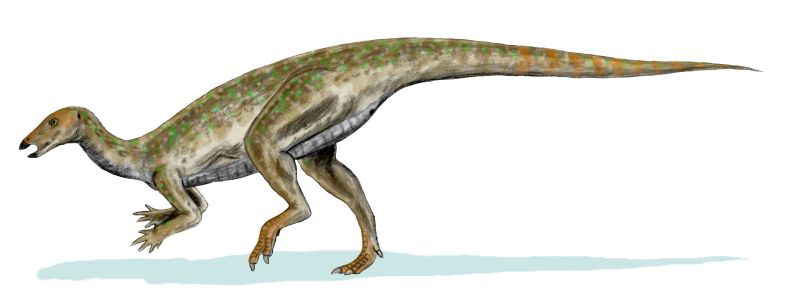Thescelosaurus, whose name aptly translates to “wondrous lizard,” stands as one of the final dinosaur species to walk the Earth before the catastrophic extinction event that marked the end of the Cretaceous period. This remarkable herbivore, often overshadowed by its more famous contemporaries like Tyrannosaurus rex and Triceratops, has a fascinating story that deserves telling. Particularly notable is its presence in the Hell Creek Formation of Montana, where specimens have been discovered that date to just before the asteroid impact that changed our planet forever. This article explores the discovery, characteristics, lifestyle, and significance of Thescelosaurus, offering insights into one of the last dinosaurs to witness the Mesozoic Era.
Discovery and Naming of Thescelosaurus

The first Thescelosaurus specimen was uncovered in 1891 by paleontologist John Bell Hatcher in the Lance Formation of Wyoming. However, it wasn’t until 1913 that Charles W. Gilmore formally described and named the genus, choosing the Greek-derived name meaning “wondrous lizard” due to the remarkable completeness of the skeleton. The type species, Thescelosaurus neglectus, received its specific name because the fossils had been “neglected” in storage for years before proper examination. Since this initial discovery, multiple specimens have been found across western North America, with particularly significant finds coming from the Hell Creek Formation in Montana, which represents the very end of the dinosaur era. These Montana specimens are especially valuable to scientists as they provide insight into dinosaur life immediately before the extinction event.
Taxonomic Classification and Evolutionary Position

Thescelosaurus belongs to the family Thescelosauridae within the larger group Ornithopoda, which includes famous duck-billed dinosaurs like Edmontosaurus. However, Thescelosaurus represents a more basal (primitive) form of ornithopod, maintaining several ancestral features while its relatives evolved more specialized adaptations. Paleontologists classify it within Ornithischia, one of the two major dinosaur orders, characterized by a bird-like pelvis structure despite having no direct relationship to birds. The evolutionary history of Thescelosaurus reveals a conservative lineage that maintained a similar body plan for millions of years, suggesting its anatomy was well-adapted to its ecological niche. This taxonomic position makes Thescelosaurus particularly valuable for understanding the evolution of ornithopod dinosaurs and their survival strategies leading up to the mass extinction.
Physical Characteristics and Size

Thescelosaurus was a medium-sized dinosaur by Late Cretaceous standards, typically reaching lengths of about 3-4 meters (10-13 feet) and standing approximately 1 meter (3.3 feet) tall at the hip. Unlike its larger ornithopod relatives, it maintained a relatively slender build, with an estimated weight of around 200-300 kilograms (440-660 pounds). The dinosaur walked primarily on its hind legs (bipedal locomotion), though it could likely drop to all fours (quadrupedal stance) when feeding or moving slowly. Its forelimbs were shorter than its hindlimbs but remained well-developed with functional digits. Thescelosaurus had a small head relative to its body size, with a narrow snout that ended in a keratinous beak perfect for cropping vegetation. Its teeth were leaf-shaped and designed for efficient processing of plant material, though they lacked the complex dental batteries of more advanced ornithopods.
The Skeletal Structure of Thescelosaurus
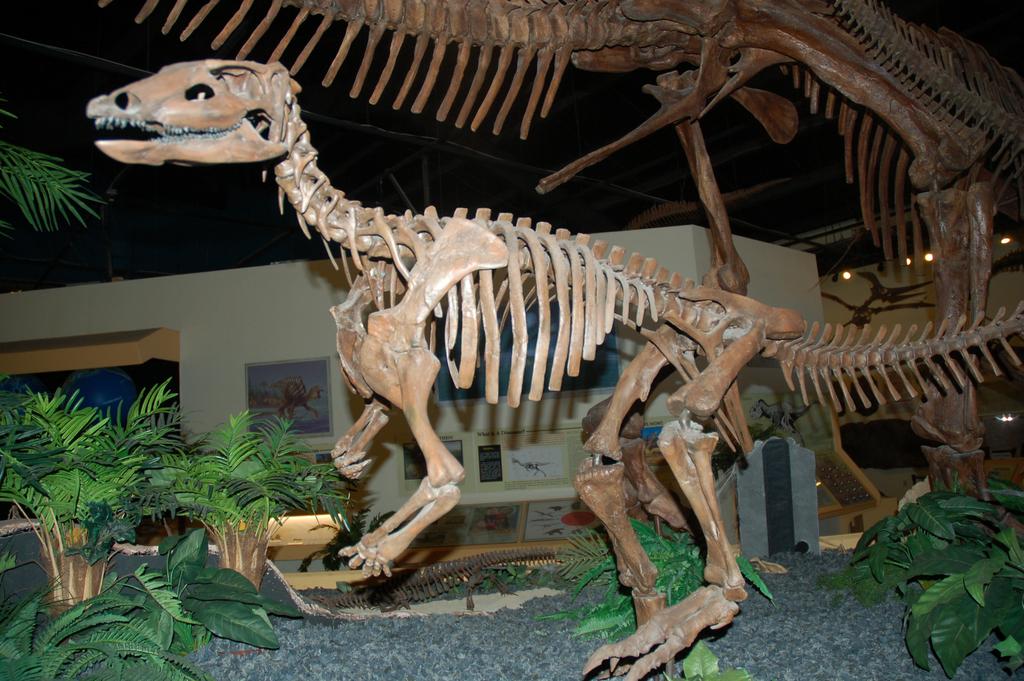
The skeleton of Thescelosaurus reveals several distinctive features that set it apart from other ornithopods. Its vertebral column consisted of about 8-9 cervical (neck) vertebrae, 16-17 dorsal (back) vertebrae, and approximately 6 sacral vertebrae fused to support the pelvis. The tail was relatively long and stiffened by ossified tendons, which would have provided balance during bipedal movement. The shoulder girdle featured a prominent scapula (shoulder blade) and coracoid, while the pelvis displayed the classic ornithischian arrangement with the pubis pointing backward, parallel to the ischium. Perhaps most distinctive were the hindlimbs, which were robust and powerfully built, suggesting Thescelosaurus was a capable runner. The feet had four functional toes, with the fifth reduced to a small remnant, a conservative feature compared to more advanced ornithopods that often had three-toed feet. These skeletal adaptations point to a dinosaur that combined primitive features with specialized adaptations for its lifestyle.
Diet and Feeding Habits
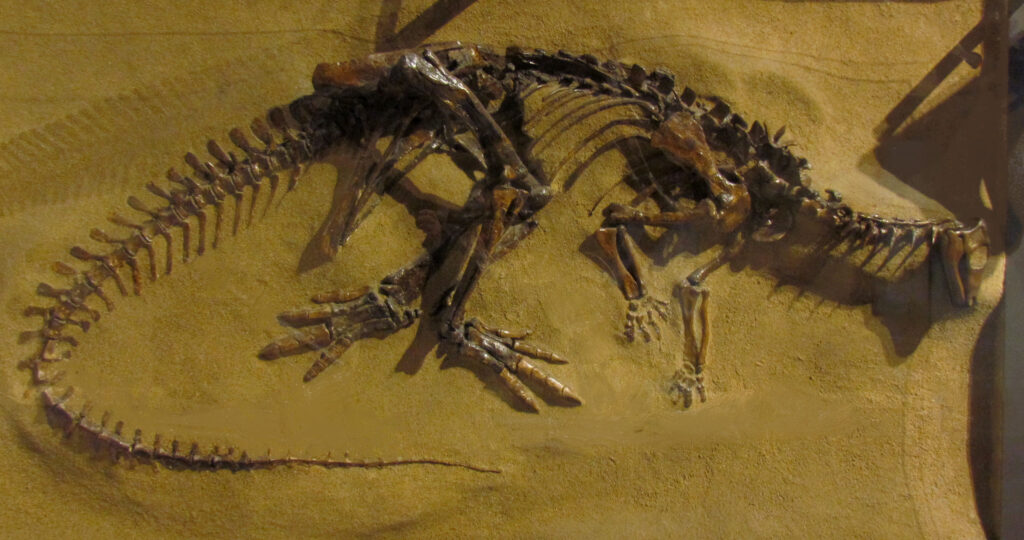
Thescelosaurus was an herbivore with dentition and jaw structure specialized for processing tough plant material. Its teeth were leaf-shaped with small serrations along the edges, ideal for shearing vegetation rather than grinding it like more advanced ornithopods. Analysis of jaw mechanics suggests Thescelosaurus employed a simple up-and-down chewing motion, supplemented by the sharp keratinous beak that would have been effective at cropping plants close to the ground. Paleobotanical evidence from the Hell Creek Formation indicates a diverse plant community including ferns, cycads, conifers, and early flowering plants, providing Thescelosaurus with a varied diet. Studies of fossilized stomach contents and coprolites (fossilized feces) from related species suggest these dinosaurs may have occasionally ingested gastroliths—small stones that would have aided in grinding food in the gizzard, similar to modern birds. The dinosaur likely fed on low-growing vegetation, using its narrow snout to selectively browse rather than indiscriminately consuming large quantities of plant matter.
Habitat and Geographic Distribution
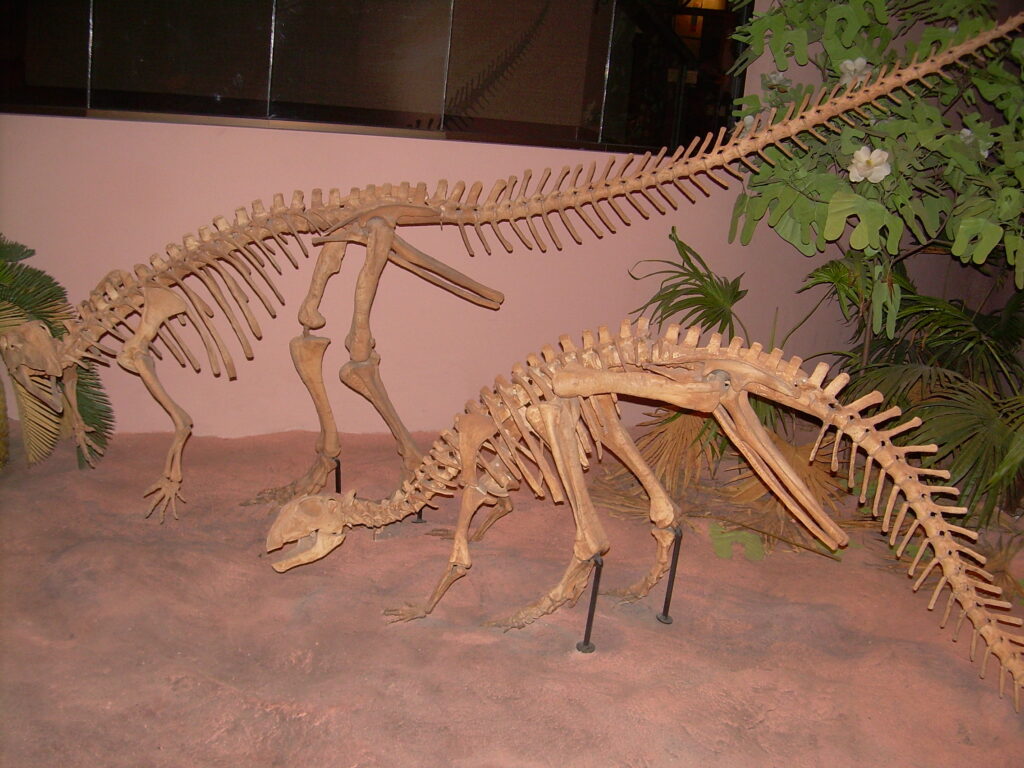
Thescelosaurus fossils have been discovered across western North America, with significant finds in Wyoming, South Dakota, Montana, and into Canada’s Alberta and Saskatchewan provinces. During the Late Cretaceous period (approximately 68-66 million years ago), this region was dominated by the Western Interior Seaway, a shallow sea that divided North America into eastern and western landmasses. Thescelosaurus inhabited the western landmass known as Laramidia, specifically in coastal plains and river valleys that featured a warm, subtropical climate. The Hell Creek Formation in Montana, where some of the most well-preserved specimens have been found, represents a diverse ecosystem of rivers, floodplains, and forests. Paleoenvironmental reconstructions suggest Thescelosaurus lived in a dynamic landscape with seasonal flooding and occasional droughts, requiring adaptability to changing conditions. This habitat was shared with numerous other dinosaur species, including Tyrannosaurus rex, Triceratops, and Edmontosaurus, creating a complex ecosystem that lasted until the end-Cretaceous extinction event.
The “Wondrous Heart” Controversy
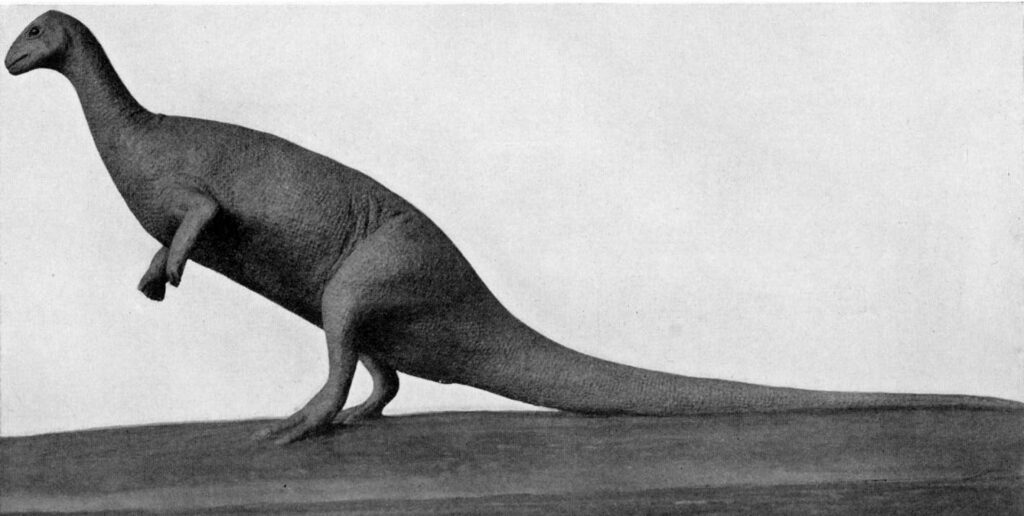
In 2000, a Thescelosaurus specimen nicknamed “Willo” became the center of scientific controversy when researchers claimed to have discovered a mineralized heart within the ribcage. This announcement generated considerable excitement as it potentially represented the first preserved soft tissue organ from a dinosaur and suggested Thescelosaurus might have had a four-chambered heart similar to modern birds and mammals. The implications were significant, potentially indicating an active, warm-blooded metabolism rather than the cold-blooded physiology traditionally attributed to many dinosaurs. However, subsequent analysis using more advanced scanning techniques revealed the supposed heart was more likely a concretion—a natural mineral formation that coincidentally formed in the chest cavity after burial. This reinterpretation highlights the challenges in paleontological research and the importance of rigorous scientific scrutiny. While the “dinosaur heart” interpretation has been largely rejected, the debate stimulated valuable research into dinosaur physiology and taphonomy (the study of how organisms decay and become fossilized).
Behavior and Social Structure

Understanding the behavior of extinct animals presents significant challenges, but paleontologists can make reasonable inferences based on anatomical features and occasional fossilized evidence of behavior. Thescelosaurus had relatively large eye sockets positioned on the sides of its skull, suggesting good peripheral vision that would have been advantageous for detecting predators in open environments. The brain endocast (a cast of the brain cavity) indicates average intelligence for a dinosaur of its type, with well-developed optic lobes supporting the importance of vision. While no definitive evidence of herding behavior has been found specifically for Thescelosaurus, the discovery of multiple individuals preserved together in some sites suggests they may have at least occasionally gathered in small groups. The lack of obvious sexual dimorphism (physical differences between males and females) in known specimens makes it difficult to determine reproductive behaviors. However, like other ornithopods, Thescelosaurus likely laid eggs in nests and may have exhibited some degree of parental care, though direct fossil evidence for this is currently lacking.
Predators and Defense Mechanisms

Living in an ecosystem that included apex predators like Tyrannosaurus rex and Dakotaraptor, Thescelosaurus would have needed effective defense strategies to survive. Its powerful hindlimbs suggest it was capable of rapid acceleration and sustained running, making flight its primary defense mechanism. Calculations based on limb proportions indicate Thescelosaurus could have reached speeds of approximately 20-25 mph (32-40 km/h), fast enough to outrun larger predators over short distances. Additionally, some specimens show evidence of ossified tendons in the tail that would have provided rigidity, potentially allowing the tail to be used as a defensive whip. Unlike some of its relatives, Thescelosaurus lacked obvious defensive structures like the bony frills of ceratopsians or the armored plates of ankylosaurs. However, some specimens show evidence of healed injuries, indicating that individuals could survive predatory attacks. This suggests Thescelosaurus likely relied on vigilance, speed, and possibly group living as its main survival strategies in a predator-rich environment.
Growth and Development

Studies of Thescelosaurus bone histology (microscopic bone structure) have provided insights into how these dinosaurs grew throughout their lives. Analysis of growth rings in bones, similar to tree rings, indicates that Thescelosaurus likely reached sexual maturity at around 3-4 years of age but continued growing for several more years. Unlike some larger dinosaurs that experienced rapid early growth followed by a plateau, Thescelosaurus appears to have had a more moderate, consistent growth rate throughout its development. Juvenile specimens show proportionally larger eyes and shorter snouts than adults, a common pattern in vertebrate development where the head features develop earlier than the rest of the body. The estimated lifespan of Thescelosaurus was approximately 10-15 years, relatively short compared to larger dinosaurs but consistent with its medium body size. This growth pattern suggests Thescelosaurus employed a life history strategy focused on reaching reproductive age relatively quickly, which may have been advantageous in an environment with high predation pressure.
Thescelosaurus and the K-Pg Extinction Event
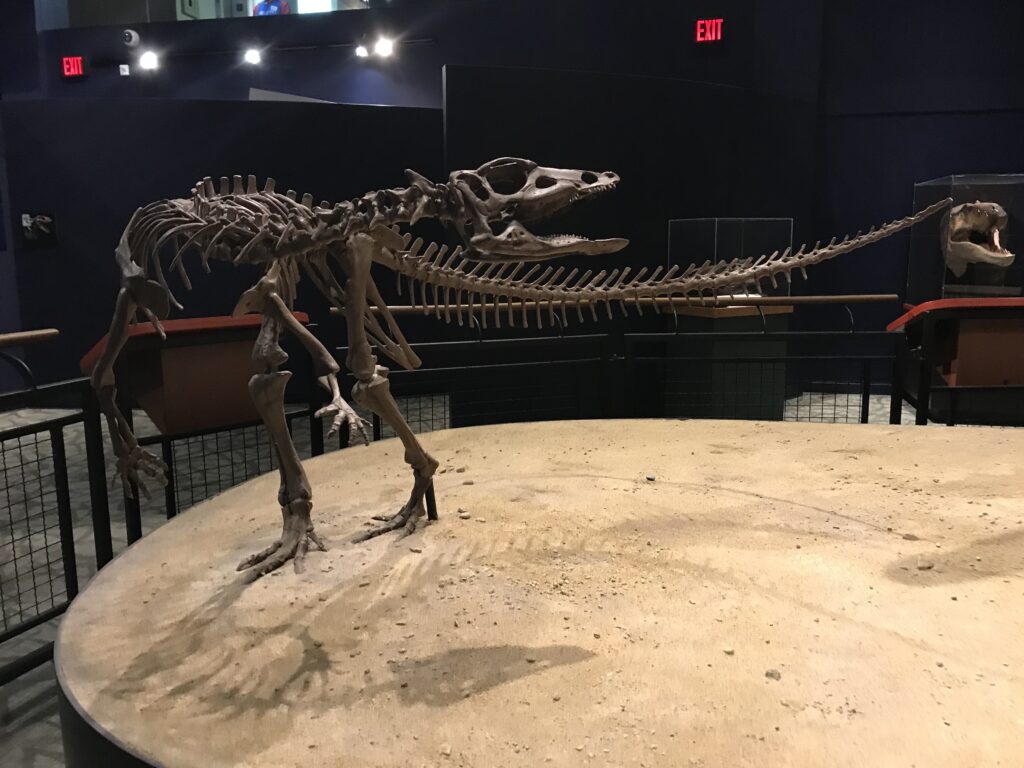
One of the most fascinating aspects of Thescelosaurus is its presence in the geological record right up to the Cretaceous-Paleogene (K-Pg) boundary, the point marking the mass extinction event that eliminated non-avian dinosaurs 66 million years ago. Specimens from the Hell Creek Formation in Montana have been found in the highest stratigraphic layers before the boundary, indicating Thescelosaurus was among the last dinosaur species to exist before the catastrophic asteroid impact. This makes it an invaluable subject for understanding dinosaur ecology immediately before extinction. Interestingly, despite being a relatively small, mobile herbivore with a presumably adaptable diet—characteristics that might seem advantageous for surviving environmental upheaval—Thescelosaurus still perished along with its larger contemporaries. This observation has contributed to scientific understanding of the extinction’s severity and comprehensive impact on terrestrial ecosystems. The presence of Thescelosaurus in these terminal Cretaceous deposits provides a poignant glimpse of dinosaur life at the very end of their 165-million-year reign.
Famous Specimens and Museum Displays
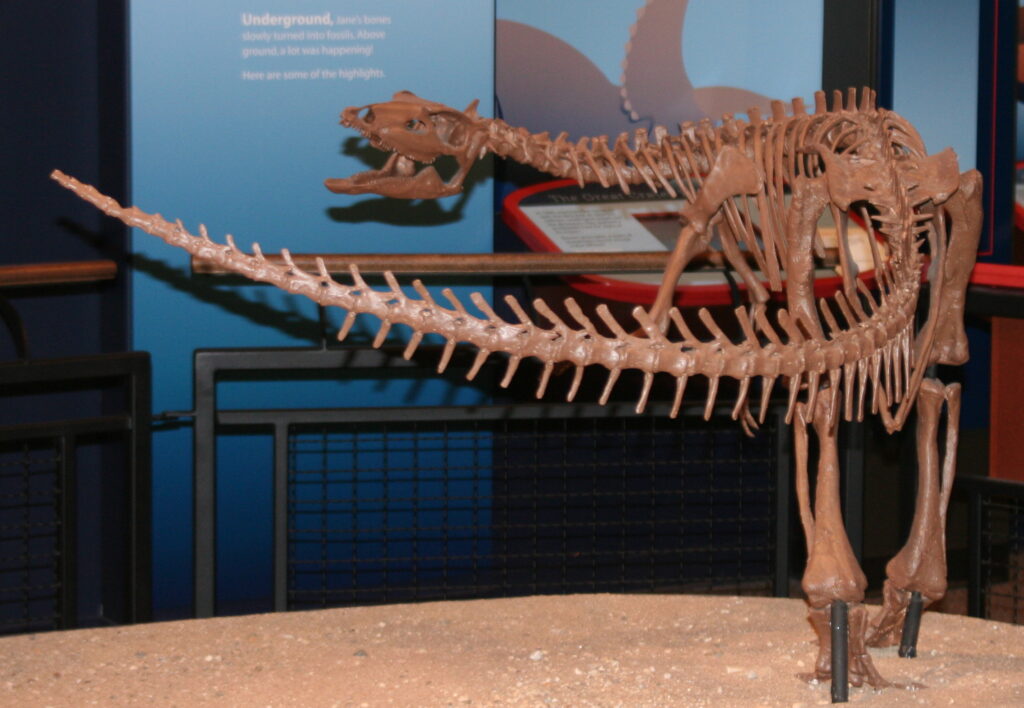
Several notable Thescelosaurus specimens have significantly contributed to our understanding of this dinosaur and can be viewed in museums across North America. The aforementioned “Willo” specimen, despite the controversy surrounding its supposed “heart,” remains one of the most complete Thescelosaurus skeletons and is displayed at the North Carolina Museum of Natural Sciences. The Royal Saskatchewan Museum houses another remarkable specimen discovered in 1993 that preserves rare skin impressions, providing insights into the external appearance of Thescelosaurus. The original type specimen described by Gilmore is housed at the Smithsonian Institution’s National Museum of Natural History in Washington, D.C., while other significant specimens can be found at the Museum of the Rockies in Montana and the Royal Tyrrell Museum in Alberta, Canada. These museum displays not only showcase the scientific importance of Thescelosaurus but also make this lesser-known dinosaur accessible to the public, helping to educate visitors about the diversity of dinosaur life beyond the famous giants that often dominate popular imagination.
Scientific Significance and Ongoing Research

Thescelosaurus continues to be an important subject in paleontological research for several compelling reasons. Its position as one of the last non-avian dinosaurs provides crucial data for understanding the lead-up to the K-Pg extinction event and the ecological conditions just before the asteroid impact. Recent research has focused on detailed anatomical studies using advanced imaging techniques like CT scanning to reveal previously hidden aspects of Thescelosaurus anatomy, including brain case structure and inner ear morphology that offer clues about sensory capabilities and potential behaviors. Isotope analysis of tooth enamel has begun to provide insights into Thescelosaurus’ diet and habitat preferences, while new specimens continue to be discovered that fill gaps in our knowledge. Additionally, Thescelosaurus is significant for understanding ornithopod evolution, representing a more basal form that helps illustrate the evolutionary trajectory of this important dinosaur group. Current research questions include better understanding growth patterns, potential geographic variation among specimens from different locations, and more precise dating of specimens to determine if different species lived at slightly different times.
Conclusion

Thescelosaurus, the “wondrous lizard,” indeed lives up to its name through its scientific significance and the story it tells of dinosaur life at the end of the Cretaceous period. From its medium-sized, bipedal build to its plant-eating lifestyle and apparent ability to thrive right up until the asteroid impact, this dinosaur provides a fascinating window into a lost world. The specimens found in Montana’s Hell Creek Formation are particularly valuable, representing some of the last dinosaurs to walk the Earth before the mass extinction that forever changed our planet’s ecological landscape. While Thescelosaurus may lack the dramatic features that make some dinosaurs famous in popular culture, its scientific importance cannot be overstated. As research continues, this remarkable survivor from the twilight of the dinosaur era will undoubtedly continue to yield new insights into one of the most fascinating chapters in Earth’s history.

